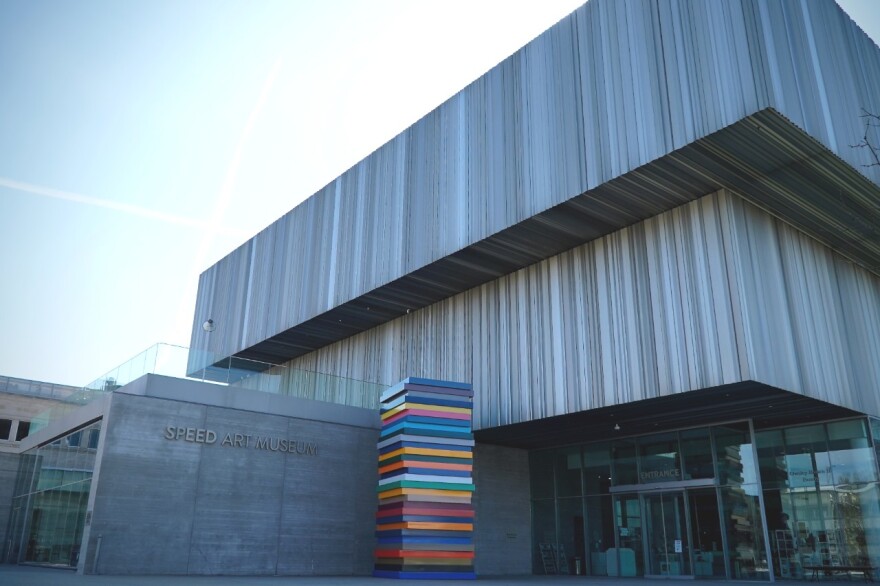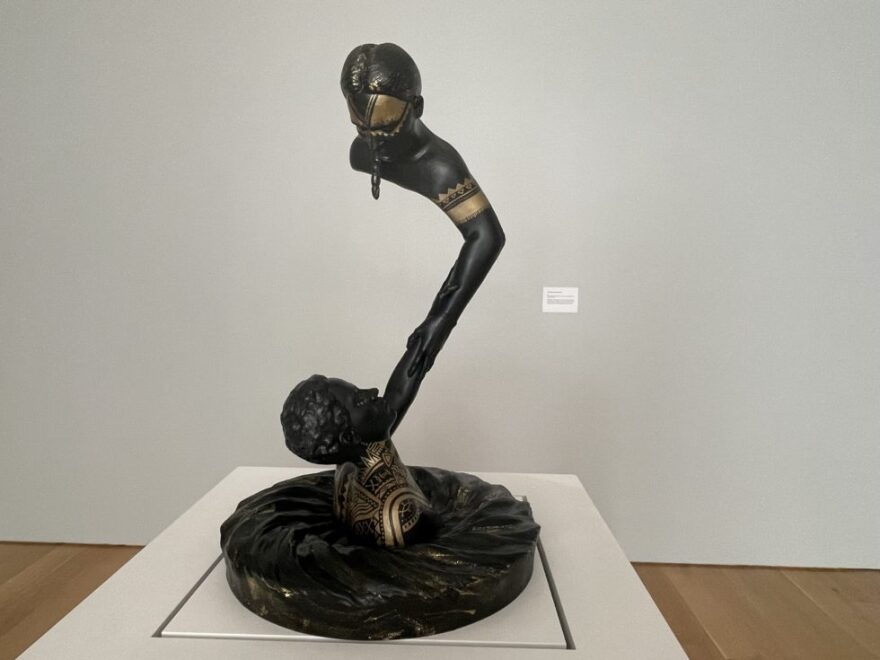Ceremony, tradition and the flow of time are some of the themes represented in “Something in the Water” — artist Shauntrice Martin’s first solo exhibit, and the newest on display at Louisville’s Speed Art Museum.
In the spring, Martin became the museum’s first Community Connections artist-in-residence. Through this residency program, funded by the National Endowment for the Arts ‘Our Town’ grant, the Speed aims to better represent and engage creatives and residents of the city’s Russell Neighborhood — and extend a platform for them to showcase their ideas, work and experiences.
Martin is director of #FeedTheWest, a local program centered around food justice and dismantling the structural barriers to accessing healthy, nutritious foods. “Something in the Water'' is a celebration of her African and Choctaw heritage.
“It was really important for me, because my great grandmother never separated the two, to really have that be prominent, equally prominent,” Martin said. “You'll see feathers and cowrie shells, you'll see some of the symbols from both cultures. And I really wanted to do justice and show my veneration for our ancestors.”
The exhibit includes five mixed-media installations that incorporate the use of painting, textiles, and natural elements like rain drops and tree branches.
The last work of art is a sculpture featuring two women, one Indigenous the other African. Martin said her installment symbolizes freedom, strength and kinship between the two cultures, despite the Choctaw Nation’s history of perpetuating slavery.
“My great grandmother, Willie B. Wells was one of the first people to tell us about our history,” Martin said. “In Mississippi, there’s a river called the Bogue Chitto. On one side, were plantations and enslaved Black people, on the other side was sovereign Native land. If you were able, as a Black person, to make it across, you were free.”
“Something in the Water” is the culmination of Martin’s residency. She also held a series of workshops in the months leading up to it — including one for youth to experiment with different kinds of art and another for up-and-coming artists on how to monetize their work.
“People need to know that they're artists and know it and not doubt it and have the audacity to say it to themselves and to the world,” Martin said. “Especially if you’re Black — if you're the first person in your family to go to college — [there’s an associated notion that] you have to use every opportunity and not take risks that could get you back in poverty because we are tasked with breaking the cycle.
Martin said the Speed hasn’t always touted a commitment to being inclusive, which kept her from frequenting the museum and its programming.
“This never felt like a space that I belonged in,” Martin said. “I just didn't see myself. The Africa section is kind of a blip — it's really small compared to some other museums of this same size…that tells me most of what I need to know, that it's not really a place for me.”
Martin added that, in recent years, she noticed Speed's efforts to become a place for everyone in its intentional increase in program diversity and access to membership. She first became involved with the museum through its partnership program with the Play Cousins Collective for parents and children who have been affected by incarceration.
“That was my first time really coming to the Speed…I just appreciated having that space where I didn't feel judged,” Martin said. “Having programs like that really helped me feel the Speed could be a place for me. So maybe other spaces that have been exclusionary could be for me as well.”
Martin said, while there are still barriers that exist, change is attainable.
“It can uphold white supremacy, just like most institutions that have been around a long time, but I do think there are people here who are willing to do some work to change that,” Martin said.
Toya Northington is the museum’s community investment strategist. She said the institution is looking to make changes across several areas — from exhibits to paid internships and employee growth opportunities.
“We are looking at who’s represented in our permanent collections and…there is an intention paid to the artists and how we talk about the art exhibited — this will allow for multiple narratives to be told,” Northington said. “Also, how we could support the local artists and the art community. These things are constantly evolving.”
The application period for next year’s Community Connections artist residency is open through the end of the month. Martin’s exhibit, “Something in the Water”, will be on display until February 3.
Support for this story was provided in part by the Great Meadows Foundation.





